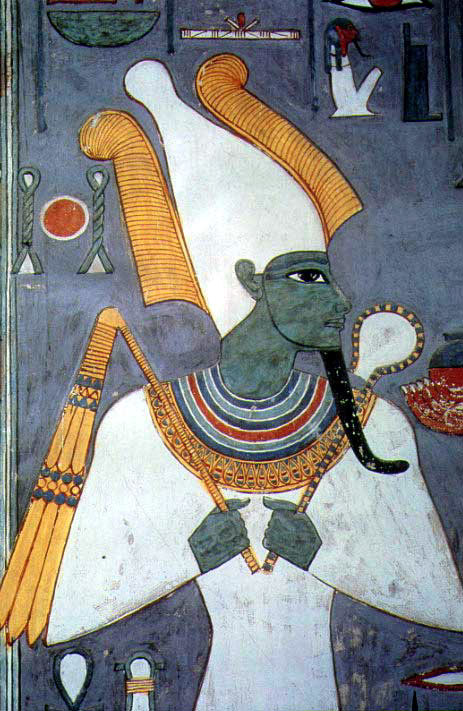
By Patrick Hunt –
What is the relationship between ancient Egyptian kingship and animal husbandry, specifically the practice of owning, tending and herding animals like cattle? Ancient cattle pens have been found in Nilotic contexts going back at least eight thousand years into the Neolithic, possibly the earliest examples of bovid domestication in the world with likely auroch ancestry (Bos primigenius africanus). Even older associations between humans and cattle can be found possibly as far back as 12,000 years where horn cores at Tushka in Egyptian Nubia were placed over human burials. The practice of keeping and breeding cattle is attested at least as far back as predynastic Egypt in sites like Merimda Beni Salama (4900-4300 BCE) and cattle are the most commonly common domesticated animals in ancient Egypt, as Shaw and Nicholson summarize.[1]
How does this ancient practice of cattle breeding relate to kingship? Some of our best sources on early Egyptian kingship are presented in Ancient Egyptian Kingship, co-edited by O’Connor and Silverman with a series of seminal articles by noted Egyptologists. [2] To glimpse just the briefest idea of how important and sacred animals – especially herd animals – were to Ancient Egypt, Geramond’s illustrated tome, An Egyptian Bestiary: Animals in Life and Religion in the Land of the Pharaohs is a useful resource.[3]
Many funerary representations emphasize the value of animal domestication in terms of herding in both this life and the afterlife, often as a symbol of wealth, status and the security of well-being in the continuity of the good life. For example, the Nebamum tomb painting in the British Museum from circa 1350 BCE, among many others, depicts animal husbandry. In particular, the inscription with the Nebamun wall painting has the herdsman saying, “Come on, get away…pass on in quiet and in order”. [4] Part of that order is imposed by proper animal husbandry under divine kingship. Other memorable depictions, among numerous others, include long-horned cattle in a Saqqara relief from the 6th Dynasty Mastaba of Kastjemni and cattle threshing wheat in the 18th Dynasty, Tomb of Menna at Gurna.[5] Sacred cows are also frequent in Egyptian iconography, as in the [Sacred] Cow of the West, the Patroness of the Theban Necropolis. A representative sacred cow can be seen for example in the19th Dynasty Tomb of Amenemipet at Deir el-Medineh, complete with sacred menat collar , flail (flagellum), solar disc between horns and kohl-outlined eyes.[6] Thus cattle herding, power and wealth in these animals – not to mention herding of other animals like goats and sheep – are intermeshed in documented Nilotic culture. Several types of cattle horns can be seen in images, from forward-pointing as in Nebamun’s tomb to lyriform long horns as at Saqqara or inward-curling as in the Narmer Palette (also known as the Great Hierakonpolis Palette), although this latter depiction may be stylized and not necessarily true to nature as the earliest image.
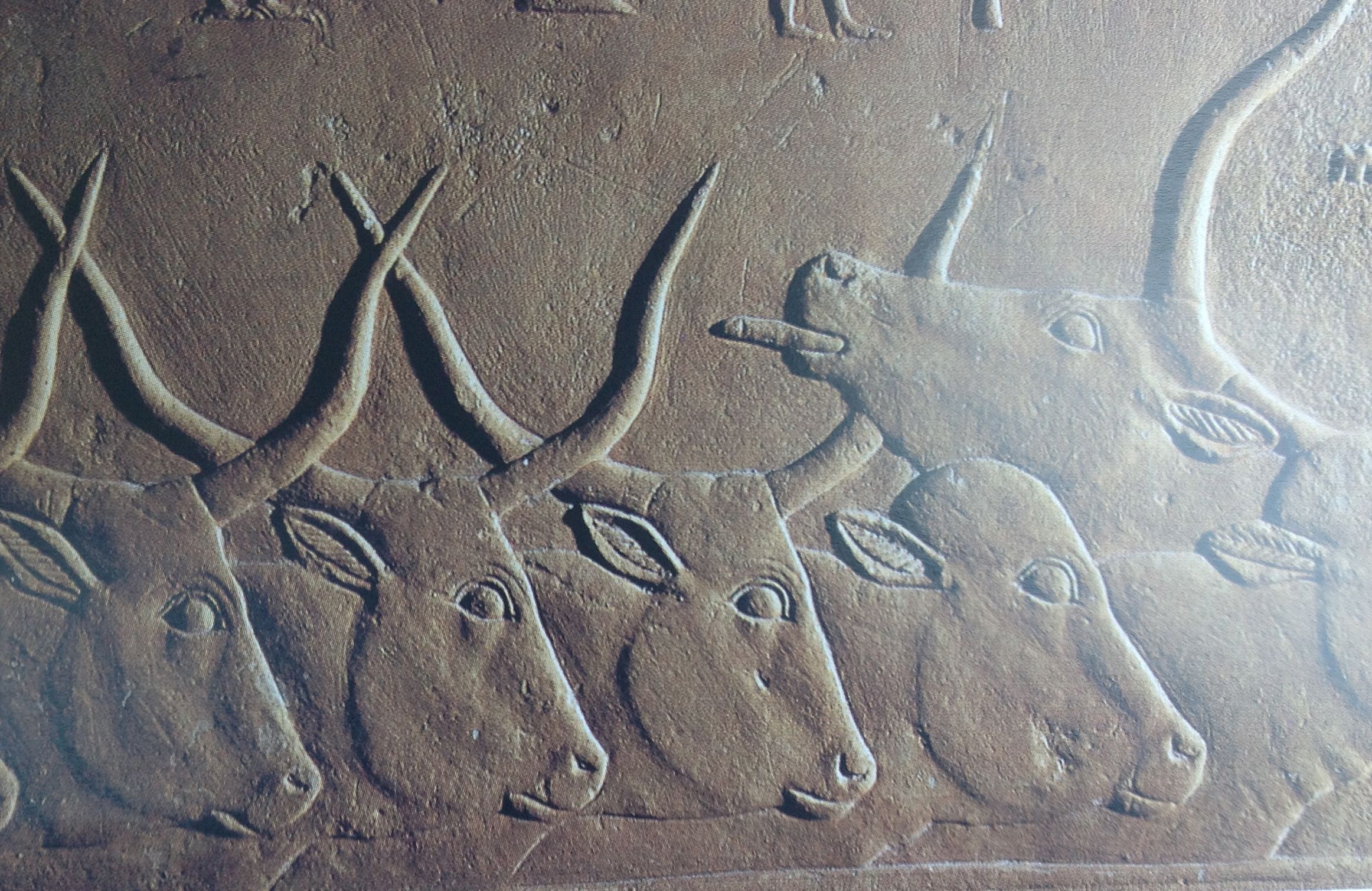
In Egypt since prehistory the king ruled over his subjects who were “cattle of the god” as poetically described in the Instruction of Merikare (circa 2025-1700 in Middle Egyptian) where King Kheti III tells his son Merikare how to rule over his people who are to be “equipped with knowledge, established with lands and endowed with cattle” and Merikare is specifically instructed to “provide for men, the cattle of God.” [7]
The identification of the Egyptian king and later pharaonic imagery is replete with cattle and cows, not even fully mentioning Hathor – also in her role as the Lady of the West and sacred cows in general – including the Seven Cows of Heaven and their Bull in the provisioning of bread and beer in the afterlife as the Book of the Dead (Book of Coming Forth By Day) Chapter 145 iterates. Ironically, while animal husbandry is about humans nurturing animals, one important divine inversion is that many pharaohs like Amenhotep III have depicted themselves as being nurtured by Hathor or being suckled and protected by her maternal power.
Another line of evidence comes from the god Osiris, lord of the underworld, as reflected in some of his symbolic imagery of one role of kingship where part of his divine iconography shows strong associations with animal husbandry. The particular Osirian visual attributes that convey “dominion over Egypt” equated with power in animal husbandry are the crook and flail Osiris holds in his hands. Although he is not always depicted with crook and flail in his hands and these are not his only attributes of kingship, these two are the most frequent instruments he holds and appear to transfer to subsequent kingship once his iconography is established (noted with the antecedent of the flail in the Narmer palette as discussed shortly). The Papyrus Hunefer (Hunefer’s Book of the Dead) states of the birth of Osiris after his father Geb gave way: “You seized the crook and flail while still in the womb, not yet having emerged on earth.” [8] While the cult of Osiris is not emphasized early on in Egypt, only rising fully in the 9-10th Dynasty (circa 2175-1975 BCE),[9] these are nonetheless ancient symbols of kingly power over herd animals. That Osiris is identified with kingship is also well-established as Silverman asserts: “…in the Pyramid Texts, the earliest large collection of religious inscriptions, the king is usually addressed as the Osiris, king so and so, thus equating the king with that deity in an implied metaphor.” [10] The fusion of funerary and fertility connotations made Osiris the god of resurrection and by the 5th Dynasty deceased rulers were equated with Osiris and his festivals at Abydos where in myth his head, the most important part of his body, was buried. Early on Osiris had absorbed the identity of the older shepherd god Anedjti who may have been a deified prehistoric ruler and whose visual crook awet attribute may have been the source of a crook emblem of Osiris. [11]
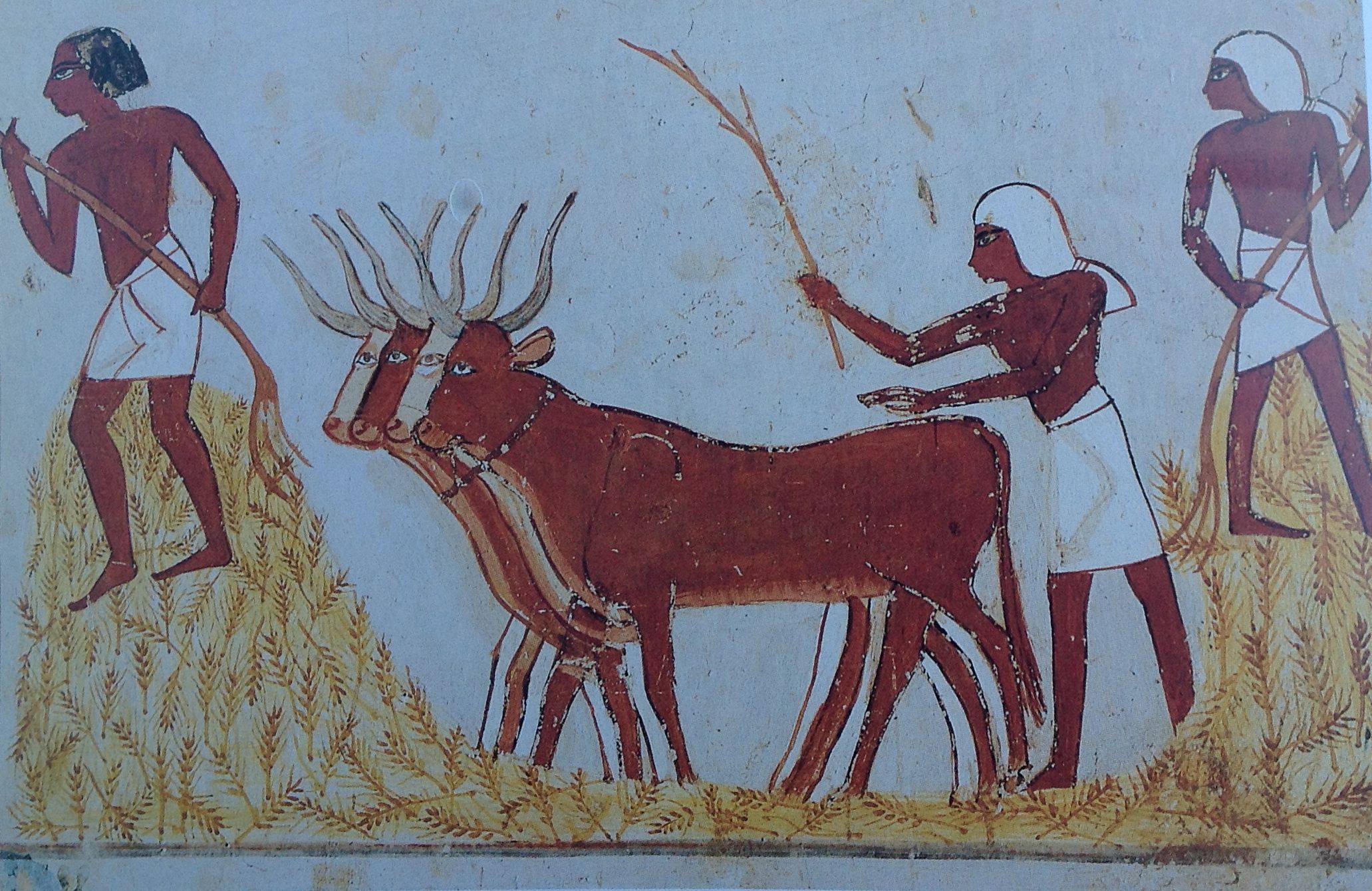
Plutarch also perceived in Classical antiquity further connection between Osiris and herd animals, specifically in his Moralia where he attempts to understand Egyptian myth and religion: “[Osiris] delivered the Egyptians from their destitute and brutish manner of living. This he did by showing them the fruits of cultivation…”In course of time he [Osiris] became king of Egypt, and devoted himself to civilizing his subjects and to teaching them the craft of the husbandman; he established a code of laws and bade men worship the gods.” Plutarch also connected Apis (as a bull deity) and Osiris, saying that Apis was the bodily image of Osiris, yet another connection between Osiris and bovids. [12]
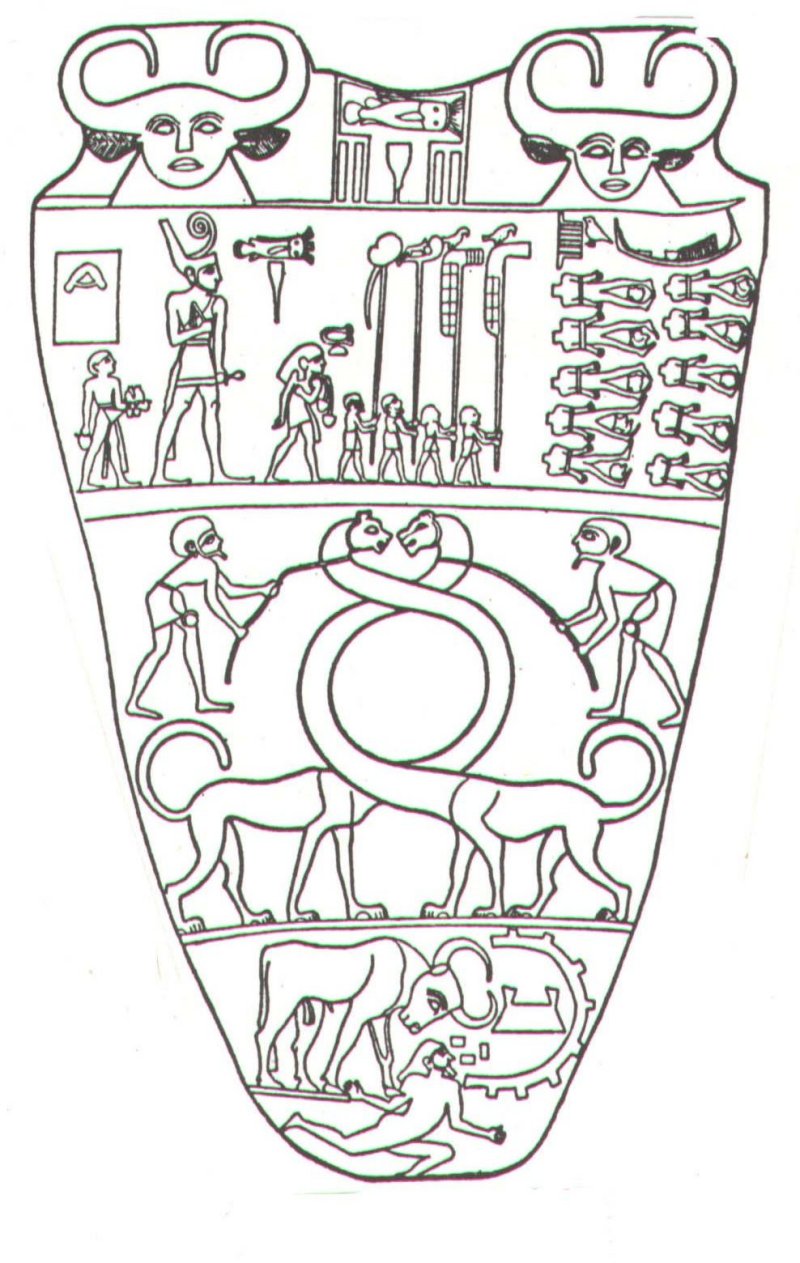
Perhaps the most important association between cattle and rulership can be found in the crook and the flail. Because they are Osirian representatives, many dead kings are likewise depicted with crook and flail. As symbols of power of the king over his human subjects like cattle, the “herdsman of humanity”, the crook and flail are images vital to Egyptian kingship. The crook was shaped to grab the neck of herd animals and its name is associated with the verb “to rule” (HqA as heka in Egyptian) and is also used in an epithet descriptive name of Osiris.[13] It is thus the strongest evidence for herding and ruling sharing a common domain. The flail (or flagellum) can even be seen considerably early, a little before 3000 BCE, in the slate Narmer Palette, side B (serpopard side, not the smiting side) upper register, shown in the right hand of the king just under his n’r (catfish) mr (chisel) hieroglyph when wearing only the Lower Crown. Naturally, Osiris and kings also often hold the was scepter, a common symbol of power and dominion as well.
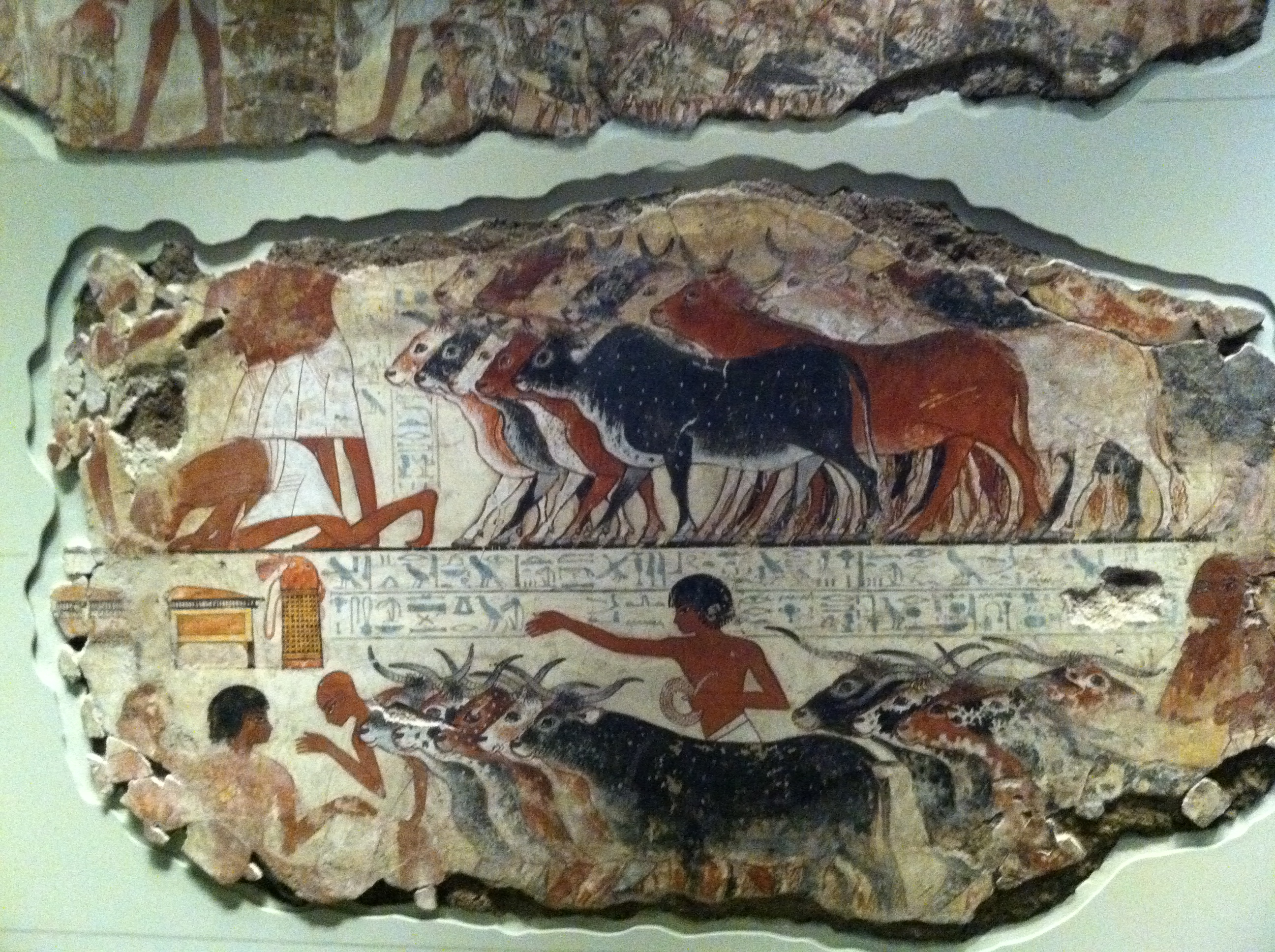
According to Shaw and Nicholson, “The most prominent items in the royal regalia were the so-called ‘crook’ (heka), actually a scepter symbolizing ‘government’ and the ‘flail’…” [14]
Increasing interest in tracing ancient Egyptian divine kingship can be shown in academic addresses, seminar papers and conferences around the world. [15] That Egyptian kingship and animals are inextricably connected deserves further study that will yield more fruitful information about ancient Egypt and the continuity of wealth and power in animal husbandry.
Notes:
[1] Ian Shaw and Paul Nicholson. Dictionary of Ancient Egypt. British Museum Press with Harry Abrams, 1995, “animal husbandry” 33-4.
[2] David O’Connor and David Silverman, eds. Ancient Egyptian Kingship. Leiden: E. J. Brill, 1995.
[3] Philippe Germond, An Egyptian Bestiary: Animals in Life and Religion in the Land of the Pharaohs. London: Thames and Hudson, 2001.
[4] British Museum, Room 61, Tomb Reliefs of Nebamun, #EA 37976. For an excellent discussion of Nebamun’s motifs, see Richard Parkinson. The Painted Tomb-Chapel of Nebamun. British Museum Press, 2008.
[5] Germond, long-horned cattle, Saqqara, 6th Dyn. Mastaba of Kastjemni, 53; cattle threshing wheat, 18th Dyn. Gurna, Tomb of Menna, 8.
[6] ibid., Germond, 185.
[7] R. O. Faulkner, tr. “The Instruction of Merikare” in W. K. Simpson. The Literature of Ancient Egypt. Yale University Press, 1973, 180-92 (near the end).
[8] Papyrus Hunefer BM 9901 plate 183, British Museum, London.
[9] Toby Wilkinson. The Rise and Fall of Ancient Egypt. Bloomsbury Press, 2011, 148-51.
[10] Silverman, “The Nature of Egyptian Kingship” in O’Connor and Silverman (supra) 1995, 61-2.
[11] Shaw and Nicholson, 213-4
[12] Plutarch, De Iside et Osiride (Moralia) 13, 29
[13] concerning HqA (“to rule”), the related word “herder’s crook”and rulership, one of the best sources for related Egyptian topics is www.reshafim.com (from the Reshafim Kibbutz in Israel) which has a well-documented compilation and discussion of references and source texts.
[14] Shaw and Nicholson, 75
[15] “Religion and Power: Divine Kingship in the Ancient World and Beyond.” Oriental Institute, University of Chicago, Feb 23-4, 2007; David O’Connor, “Revealing and Preserving the Origins of Egyptian Kingship at Abydos, Egypt.” Stanford Archaeology Center, Stanford University.